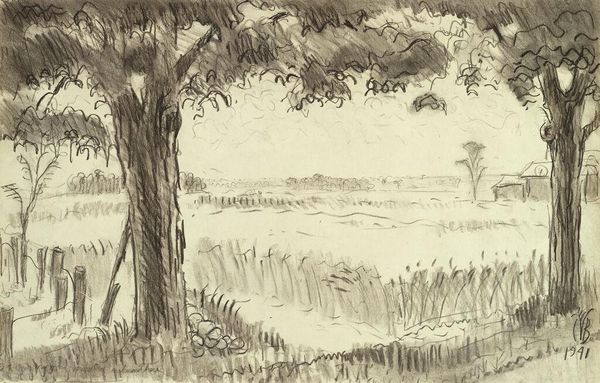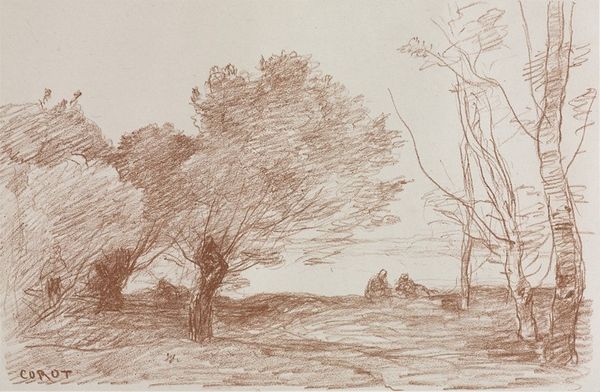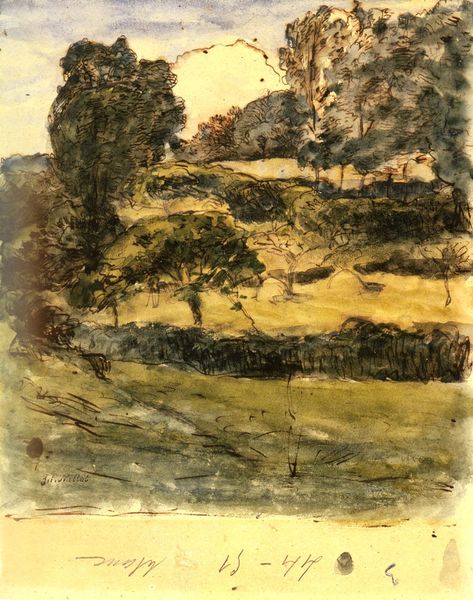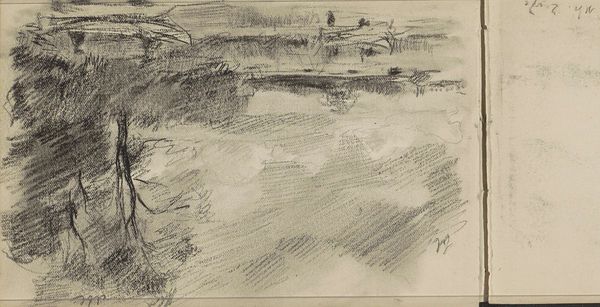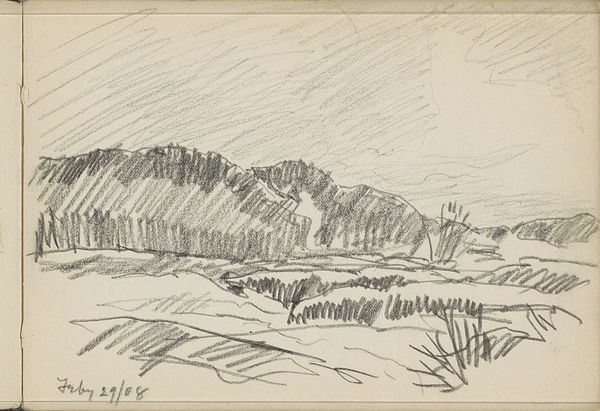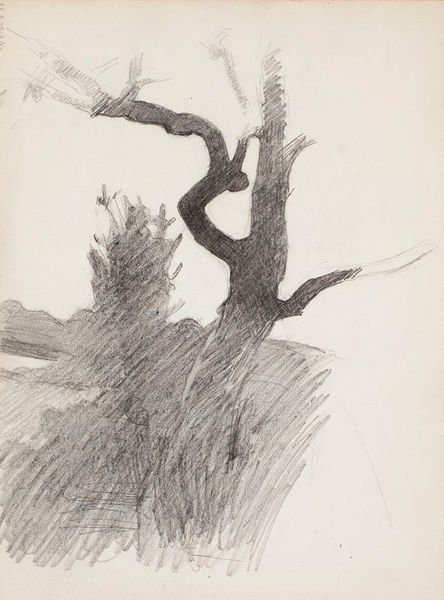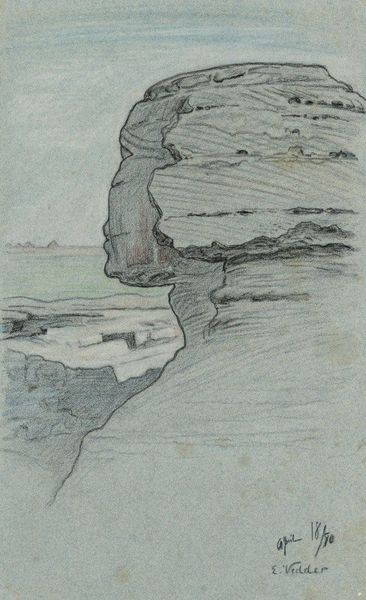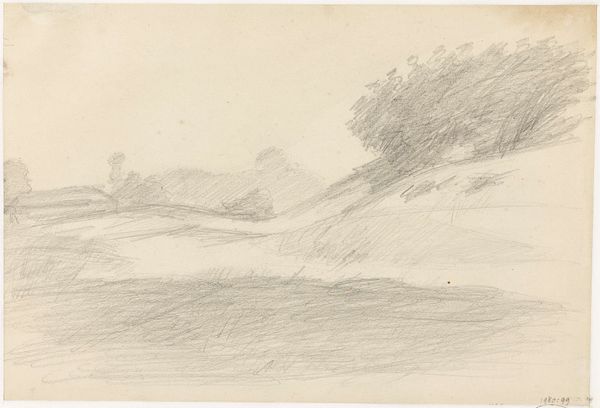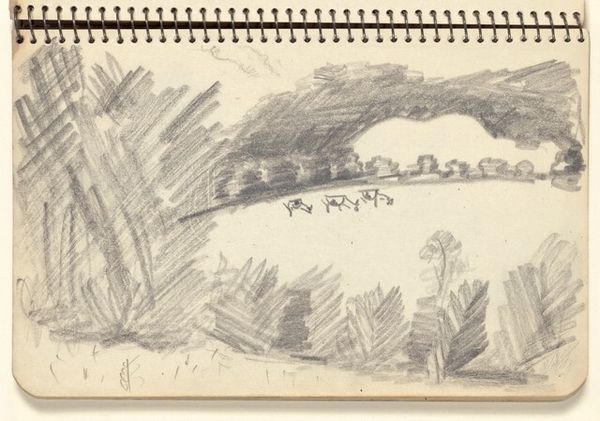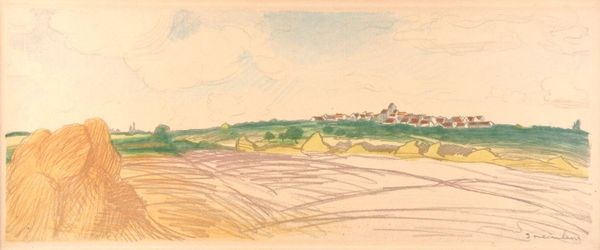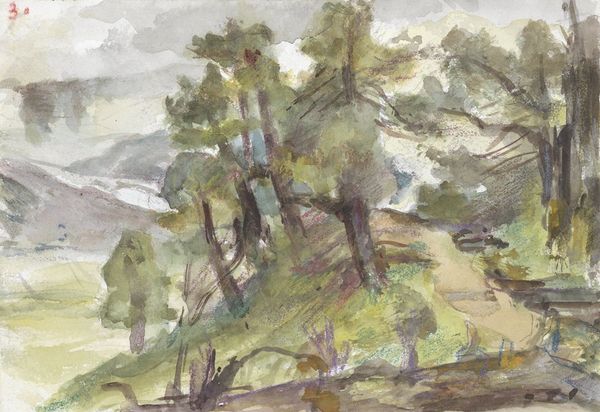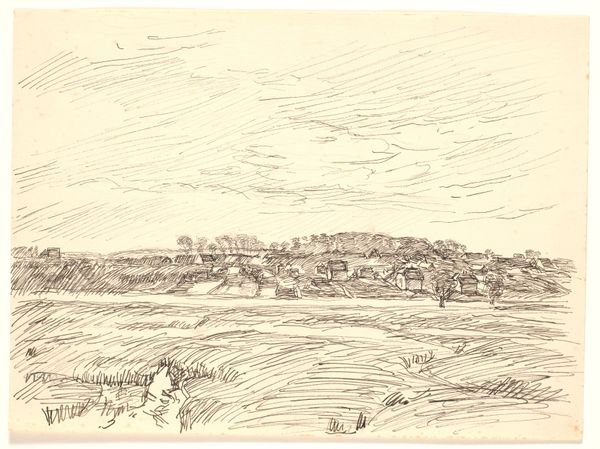
drawing, coloured-pencil, pencil
#
drawing
#
coloured-pencil
#
impressionism
#
landscape
#
form
#
pencil
#
line
Copyright: Public Domain: Artvee
Editor: So, this drawing is titled "Landscape," by Berthe Morisot. It looks like she used pencil and colored pencil. It’s very light and airy; you can almost feel a breeze. What strikes you about this piece? Curator: I'm interested in the raw materiality of the work. The visible pencil strokes, the layering of color, the seemingly unfinished quality… these all speak to a deliberate deconstruction of traditional landscape painting. How do these materials and the process reflect on Morisot's status as a woman artist? Editor: That's interesting, I hadn't thought about the connection to her identity. So the apparent sketch-like quality, the choice of pencil over oil paint, speaks to something? Curator: Precisely. During Morisot’s time, women artists often weren’t afforded the same access to materials, training, or exhibition opportunities. Embracing readily available, 'lesser' materials could be interpreted as a subversive act, a quiet rebellion against established hierarchies. Consider, also, the portability of pencil and paper - what sort of spaces and situations were afforded to its usage? Editor: So the medium isn’t just a choice; it’s a statement about access and artistic labor. Are there examples of other Impressionists who took a similar approach? Curator: Definitely. Degas experimented extensively with pastel, for example. But with Morisot, it feels particularly resonant given the societal constraints she navigated. We can also see this as prefiguring later artistic movements where the process and the raw materials take center stage, think Arte Povera, where unconventional resources are the art itself. Editor: I see, it reframes the idea of a 'finished' artwork and emphasizes the act of creation. I'll never look at pencil drawings the same way again. Curator: Precisely. Paying attention to these material realities offers fresh perspectives on both the artist and the art itself.
Comments
No comments
Be the first to comment and join the conversation on the ultimate creative platform.
